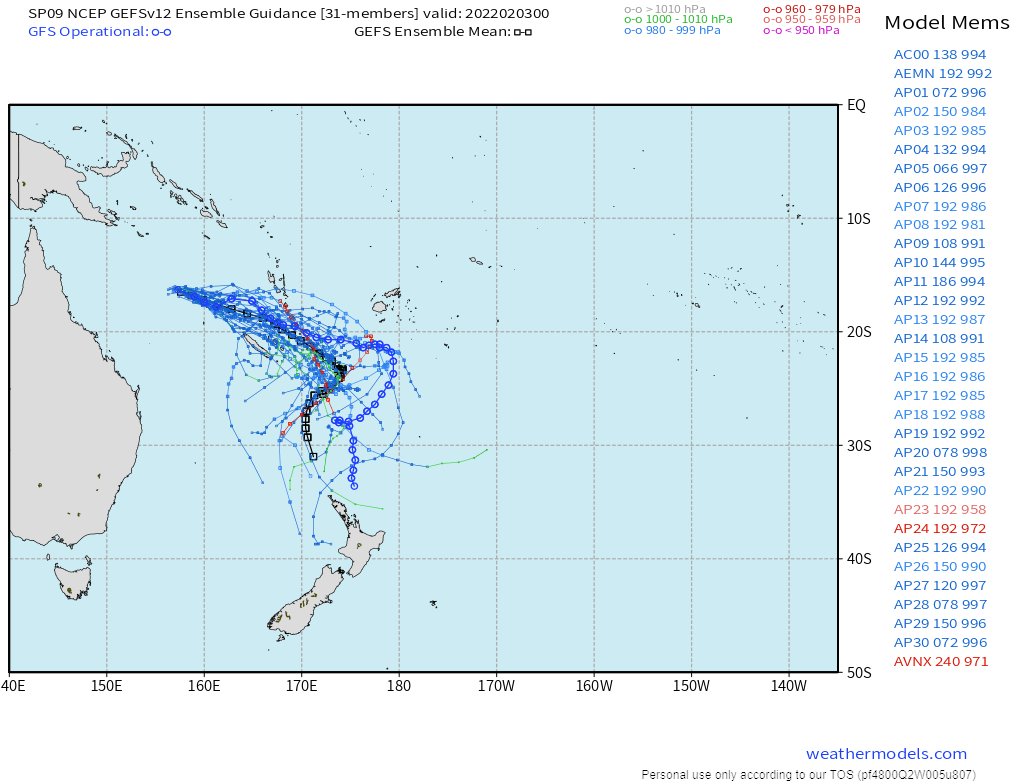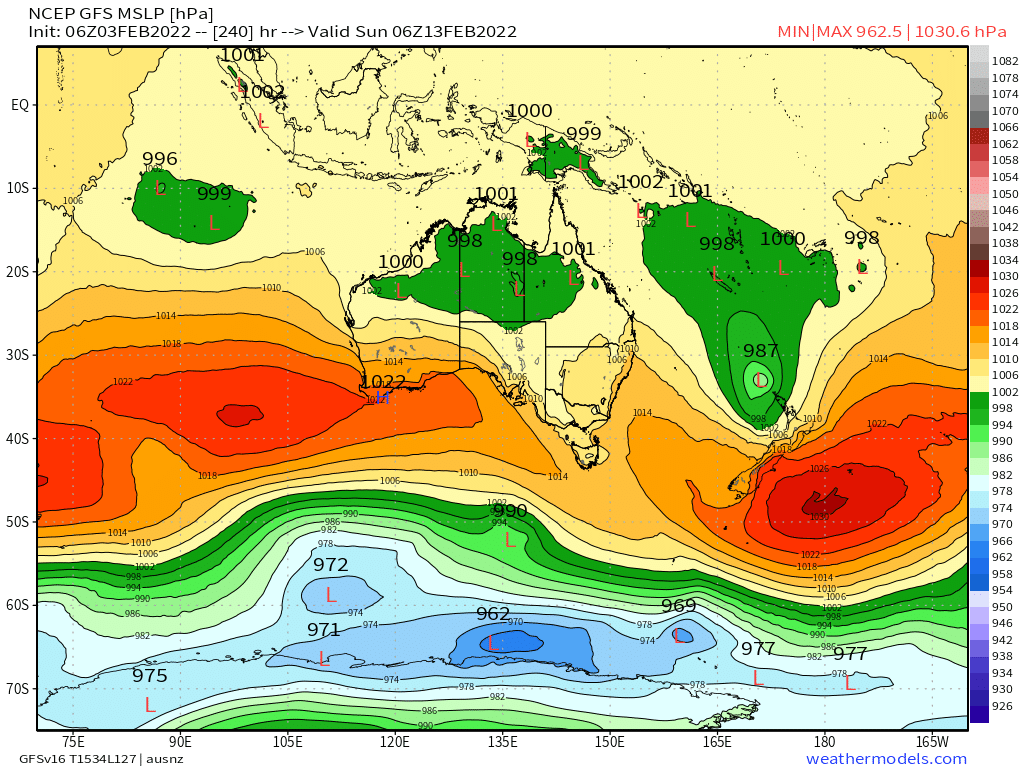
Spaghetti model simulations of several tropical storms currently north west of NZ are not looking at all good.
The possibility of a cyclone coming into the Tasman and making landfall on NZ's West Coast is now non-zero.
The possibility of a cyclone coming into the Tasman and making landfall on NZ's West Coast is now non-zero.

The above map is the European ECMWF ensemble map for the area. This specific model map is for SPO9 a designated disturbance/low pressure system of concern.
Until very recently the models had suggested it would be pulled away to the East of NZ - which is what typically happens.
Until very recently the models had suggested it would be pulled away to the East of NZ - which is what typically happens.

In this region we have four different models (GFS-US, ECMWF-Euro, AcessG-AU and CMC-Canada) each of which has a different solution on how this will play out.
But the trend is in the direction of a threat to NZ. Each of these plots show the water/energy modelling for around 12/2.



But the trend is in the direction of a threat to NZ. Each of these plots show the water/energy modelling for around 12/2.




The cause is a continuation of the phenomena which is causing the current #ExtremeWeather which is forecast to have significant impacts across all of NZ over the coming days. Namely, a very high level of tropical atmospheric moisture directly north of NZ.
High energy wet atmospheric conditions are unstable and generate low pressure systems some of which can then form into cyclones. These four maps show the same four models view on MLSP (air pressure) between 10-12 Feb. 







While there is modelling similarity in terms of the overall position at long range in terms of presence of precipitable water. When it comes to the evolution of storms they are in very broad disagreement.
The ECMWF and GFS models are far and away the most sophisticated when it comes to modelling high water/energy environments are in fairly close alignment over the next 120 hours.
Complexity appears to arise over how these two low pressure systems will interact.

Complexity appears to arise over how these two low pressure systems will interact.


• • •
Missing some Tweet in this thread? You can try to
force a refresh














